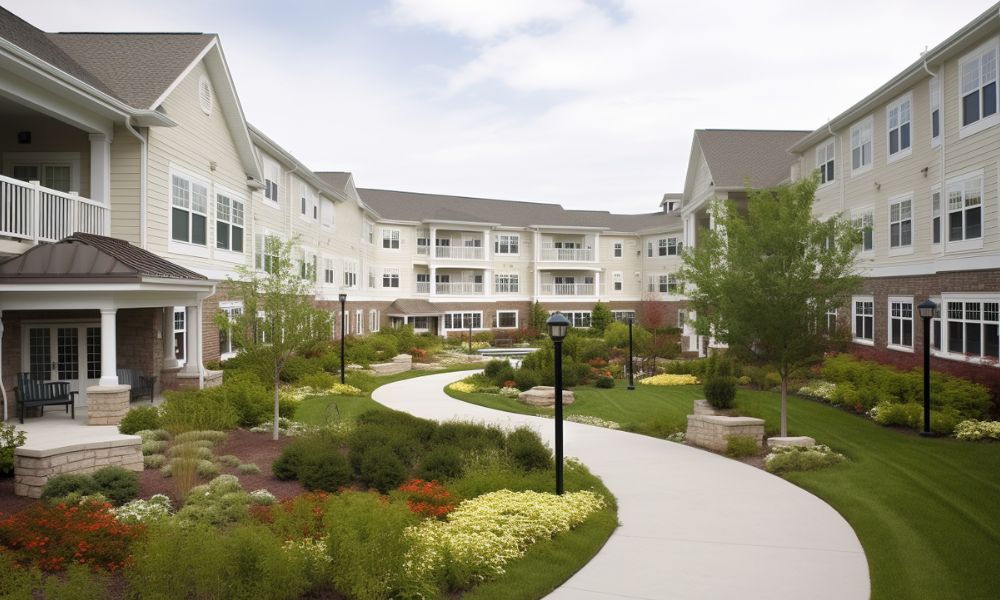Senior Apartments: A Comprehensive Guide to Housing Options for the Elderly
As we age, our housing needs often change. Senior apartments offer a unique living solution tailored to the needs of older adults, providing comfort, convenience, and community. This article explores the world of senior housing, detailing what these apartments offer and how they cater to the elderly population.

What amenities can you expect in senior housing?
Most senior apartment complexes offer a range of amenities to enhance the quality of life for their residents. Common features include:
-
Fitness centers with equipment suitable for seniors
-
Community rooms for social gatherings and activities
-
On-site laundry facilities or in-unit washers and dryers
-
Transportation services for errands and appointments
-
Outdoor spaces like gardens or walking paths
-
Security systems and personnel for peace of mind
These amenities are designed to promote an active and engaged lifestyle while providing convenience and safety for residents.
How does retirement living in apartments differ from other options?
Senior apartments offer a unique balance between independence and community living. Unlike traditional retirement homes or assisted living facilities, residents in senior apartments maintain their own private living spaces and manage their daily routines independently. However, they benefit from a supportive environment and access to communal areas where they can socialize with peers.
This type of housing differs from aging in place at home as it eliminates many home maintenance responsibilities and provides a built-in social network. It also differs from continuing care retirement communities (CCRCs) in that it doesn’t typically offer progressive levels of care on-site, focusing instead on independent living for active seniors.
Are there senior apartments with no waitlist available?
The availability of senior apartments without a waitlist can vary greatly depending on location and demand. In some areas, particularly those with a high concentration of retirees, waitlists for senior housing can be quite long. However, many communities are expanding their senior housing options to meet growing demand, which can lead to increased availability and shorter wait times.
To find senior apartments with no waitlist:
-
Research multiple communities in your desired area
-
Consider newer developments that may have more immediate openings
-
Be flexible with your location preferences
-
Work with a senior housing placement service that can provide up-to-date availability information
-
Look into both for-profit and non-profit housing options, as availability may differ
It’s important to note that while finding an apartment without a waitlist is possible, it may require some flexibility and quick decision-making when an opportunity arises.
What financial considerations should be kept in mind for senior housing?
When considering senior apartments, it’s crucial to understand the financial implications. Costs can vary widely based on location, amenities, and services offered. Here’s a breakdown of potential expenses:
| Expense Type | Description | Estimated Monthly Cost |
|---|---|---|
| Rent | Base cost for the apartment | $1,000 - $3,500 |
| Utilities | May or may not be included in rent | $100 - $250 |
| Meal Plans | Optional in some communities | $300 - $600 |
| Activities Fee | For organized events and outings | $50 - $200 |
| Transportation | If not included in base services | $50 - $150 |
| Additional Services | Personal care, housekeeping, etc. | Varies widely |
Prices, rates, or cost estimates mentioned in this article are based on the latest available information but may change over time. Independent research is advised before making financial decisions.
It’s important to consider long-term affordability when choosing senior housing. Some seniors may qualify for subsidized housing or rent assistance programs, which can significantly reduce costs. Additionally, long-term care insurance policies may cover some expenses associated with senior living, depending on the policy terms.
How can seniors find the right apartment community for their needs?
Finding the right senior apartment community involves careful consideration of various factors:
-
Location: Proximity to family, healthcare facilities, and preferred amenities
-
Budget: Ensuring the community fits within long-term financial plans
-
Social environment: Visiting communities to gauge the social atmosphere and available activities
-
Level of independence: Assessing current and potential future care needs
-
Community policies: Understanding rules regarding pets, visitors, and personalizing living spaces
-
Services offered: Evaluating which services are included and which incur additional fees
It’s recommended to tour multiple communities, speak with current residents, and carefully review all contracts before making a decision. Many seniors find that working with a senior living advisor can help navigate the options and find the best fit for their lifestyle and needs.
In conclusion, senior apartments offer a valuable housing option for older adults seeking a balance between independence and community living. By understanding the features, costs, and considerations associated with these communities, seniors can make informed decisions about their housing options and find a living situation that supports their desired lifestyle in retirement.





